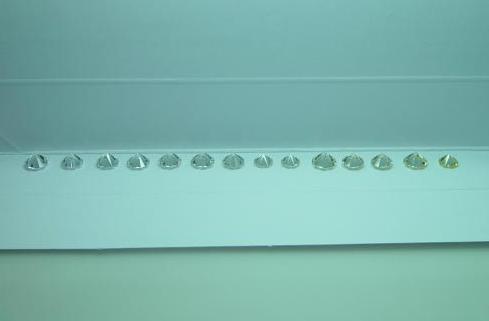A broad scale of diamond colour grades that ranges from a near colourless, almost undetectable pale yellow to increasingly tinted yellow. Once it has enough yellow saturation to qualify as a fancy colour, it is no longer called a Cape Series diamond.
Cape Series Diamonds refer to a category of diamonds that exhibit a noticeable yellow or brown tint due to the presence of nitrogen in their crystal structure. The term originates from the Cape Province of South Africa, where these diamonds were historically mined in large quantities.
Characteristics of Cape Series Diamonds:
Colour Range
These diamonds fall within the near-colourless to light yellow range on the GIA D–Z colour scale.
They typically appear in the K to M range, but some can extend beyond, showing a deeper yellow tint.
Unlike Fancy Yellow Diamonds (such as Canary Diamonds), Cape Series Diamonds do not have the intense saturation needed to be classified as “fancy colour diamonds.”
Cause of Yellow Tint
The yellowish hue comes from nitrogen impurities, which absorb blue light and make the diamond appear slightly yellow.
The higher the nitrogen concentration, the stronger the yellow tint.
Historical Significance
The name “Cape Series” comes from South Africa’s Cape Province, where many of these diamonds were first discovered in the late 19th century.
These diamonds were highly valued in the early days of diamond mining, especially before the discovery of purer, colourless diamonds.
Market Perception & Value
Higher Colour Grades (K–M): Often sold at a discount compared to colourless diamonds (D–F), making them an affordable option for buyers.
Lower Grades (N–Z): Can exhibit a stronger yellow tone, appealing to those who prefer warm-toned diamonds.
Well-cut Cape Series Diamonds can still appear brilliant, especially in round brilliant and cushion cuts, which minimize visible colour.
Modern Use
Many Cape Series Diamonds are set in yellow gold settings to enhance their warmth and reduce contrast.
Some are reclassified as “faint yellow” fancy diamonds if their colour saturation is strong enough.
